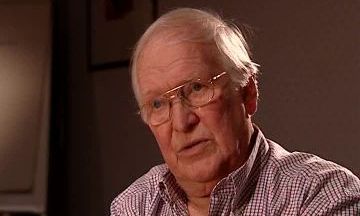NEXT STORY

Excommunication from ICI
RELATED STORIES

NEXT STORY

Excommunication from ICI
RELATED STORIES


|
Views | Duration | |
|---|---|---|---|
| 11. Testing propranolol: A non-selective beta blocker | 224 | 05:30 | |
| 12. Adam Smith's serotonin inspiration | 312 | 01:50 | |
| 13. Excommunication from ICI | 1 | 238 | 03:42 |
| 14. Working on histamines at Smith, Kline & French | 211 | 03:15 | |
| 15. Comparing the stories of beta blockers and histamine | 193 | 04:04 | |
| 16. Winning the battle of histamine antagonists | 152 | 01:09 | |
| 17. My dream of making medicinal chemistry in academia | 175 | 06:20 | |
| 18. Going to work for the Wellcome Foundation | 148 | 04:16 | |
| 19. Leaving the Wellcome Foundation and moving to King's College | 158 | 04:40 | |
| 20. Setting up my own research unit | 140 | 04:44 |

